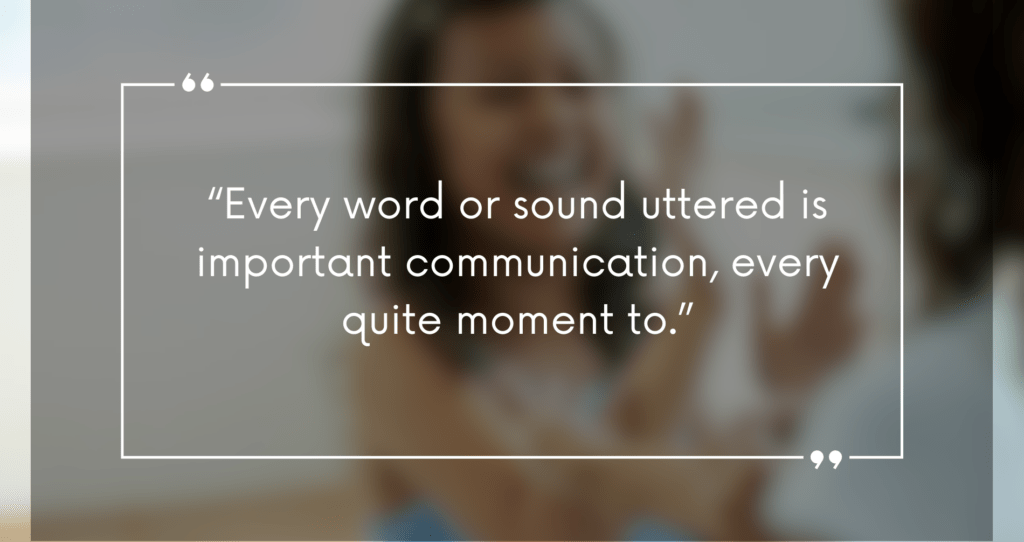
What is Declarative Language ?
When we are questioning or instructing our children we are demanding a specific right or wrong answer or a job to be done without thinking (or imperative language as it’s known)
Declarative language in a nut shell is simply a comment or a statement. Usually, it’s a statement that shares what one knows, observes, or thinks.
It is essentially thinking out loud for the child to hear, so that he or she can benefit from our models, and start to do the same for themselves
The purpose of declarative language is to share information, which then invites the child to engage after thinking.
Why Declarative language ?
Declarative language does not tell children what to do, but helps them to know what may be important to notice, so that they can then draw important conclusions on their own. It leaves room for children to take action, thereby encouraging spontaneity and independence.
e.g.
Declarative language – When the child is around we say “I am feeling hot“ (If required, look at the child and look at the fan)
Imperative Language – “Can you please switch on the fan ?”
Declarative language also gives you a chance to transfer your thinking to your child. It gives them an opportunity to hear your thoughts, understand your thinking, and act upon it.
This type of language also opens up the chance for them to problem solve on their own instead of you telling your child to specifically do something (e.g., “Put your shoes on!”).
How can I learn to use Declarative Language ?
Anytime you are tempted to ask a question or give a command, take a second and pause. See if you can think of a way to rephrase it into an observation or comment instead.
Let’s look at the following examples with how they benefit.
Declarative – “I notice that you’re upset. Let’s take a couple of deep breaths together.”
Command – “Calm down!”
Helps with emotional development and self-regulation
Declarative – “I need you to hold my hand while we walk in the parking lot so I can keep you safe.”
Command – “Hold my hand.”
Provides the child with understanding of why we do something.
Declarative – “Look, uncle is leaving. Let’s wave goodbye.”
Command – “Say Bye.”
Gives perspective to an action.
Declarative – “Wow, your shirt has a green dinosaur on it!”
Command – ” What’s on your shirt?”
Focuses on learning instead of quizzing.
Declarative – “Oh no, we’re out of glue. I wonder what we could use instead?
Command – ” How will we finish this project without glue?”
Encourages kids to problem solve
Declarative – “I think your shirt is on inside out because I can see the tag here.”
Command – ” you have worn the shirt wrong !”
Visual referencing and observation skills
Declarative – “I’m frustrated. I think I need a break.”
Command – “Please stop doing that!”
Helps kids develop their own inner voice and how to self-advocate through self-narration
Declarative – “I think you forgot something at the end of that sentence.”
Command – “Add a period to the end of your sentence.”
Develops inference skills
Declarative – “I heard your brother calling your name. Let’s see what he wants.”
Command – “What did your brother say?”
Develops joint attention, perspective, social reciprocity and collaboration.
Declarative – “I don’t think I heard the toilet flush.”
Command – “Flush the toilet.”
Gives kids a chance to discover mistakes they make without shaming or blaming
Essentially, you’re shifting away from being result or product focused and instead focusing on building important skills in areas such as executive functioning, language, independence, and social interaction.
Use words like
Wonder, know, remember, perhaps, maybe, I don’t know, might, notice, feel, see, hear, think, imagine, forget, sometimes, what a great question, let’s find out together, I’m not sure, I like, I don’t like, let’s, we, us, I, my, me
Anytime you are tempted to ask a question or give a command, take a second and pause. See if you can think of a way to rephrase it into an observation or comment instead. Try and switch that imperative to a declarative statement!
Declaratives will take time for you to get used to and more time for your child to decipher, but stick to it as much as possible and you will start seeing the benefits.